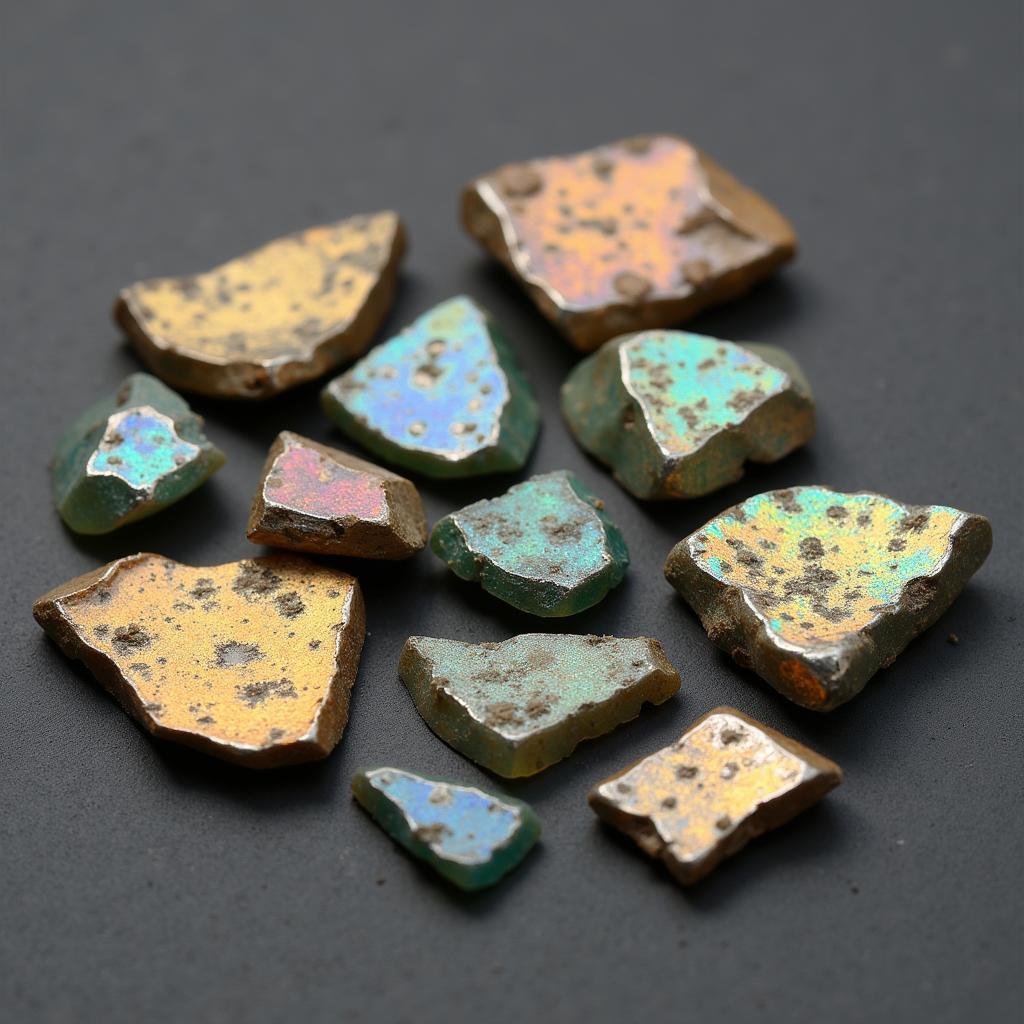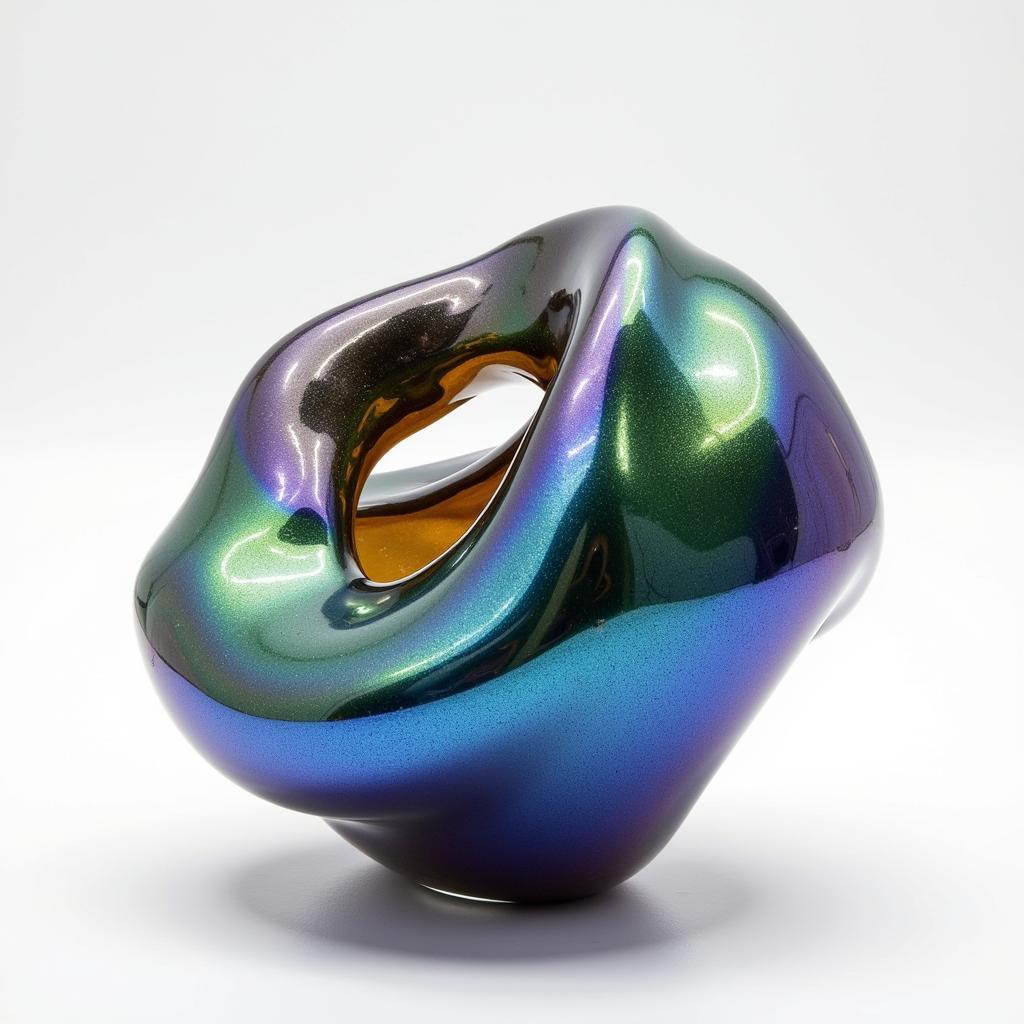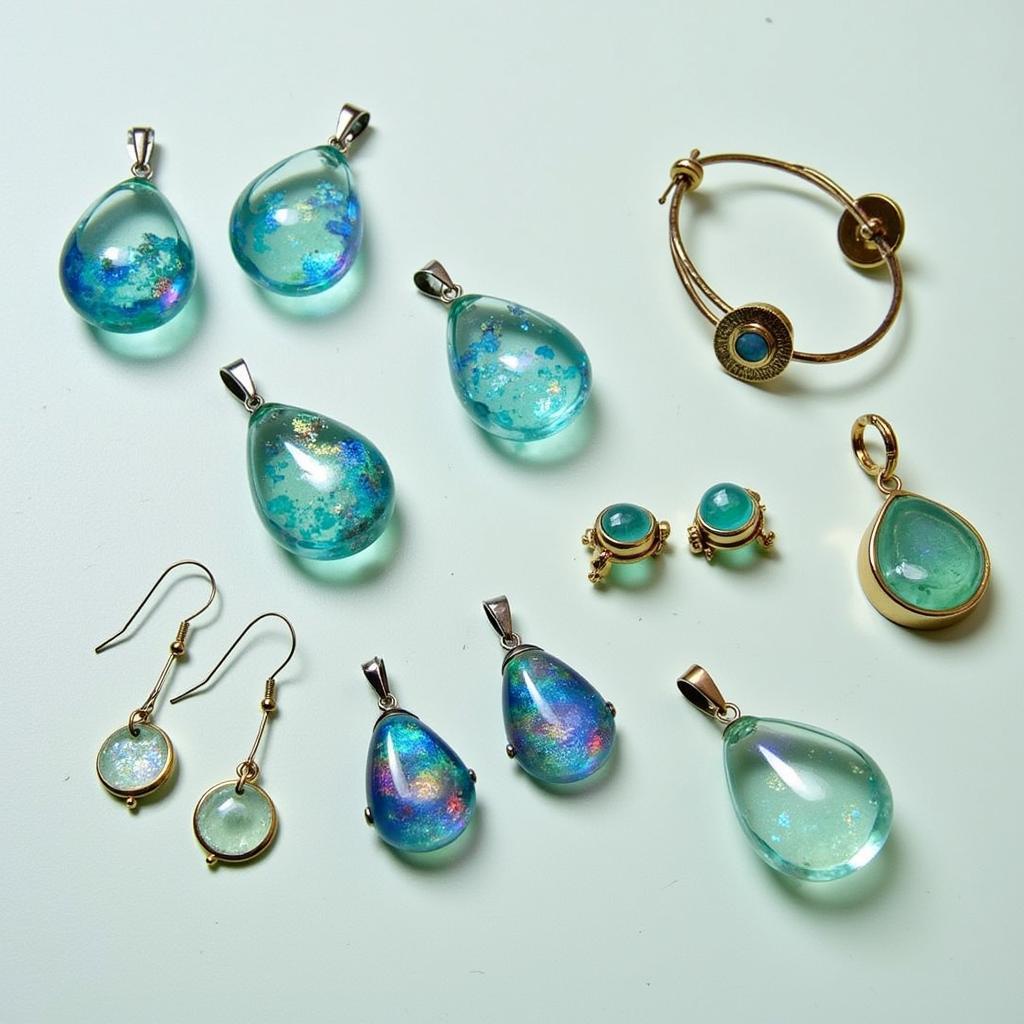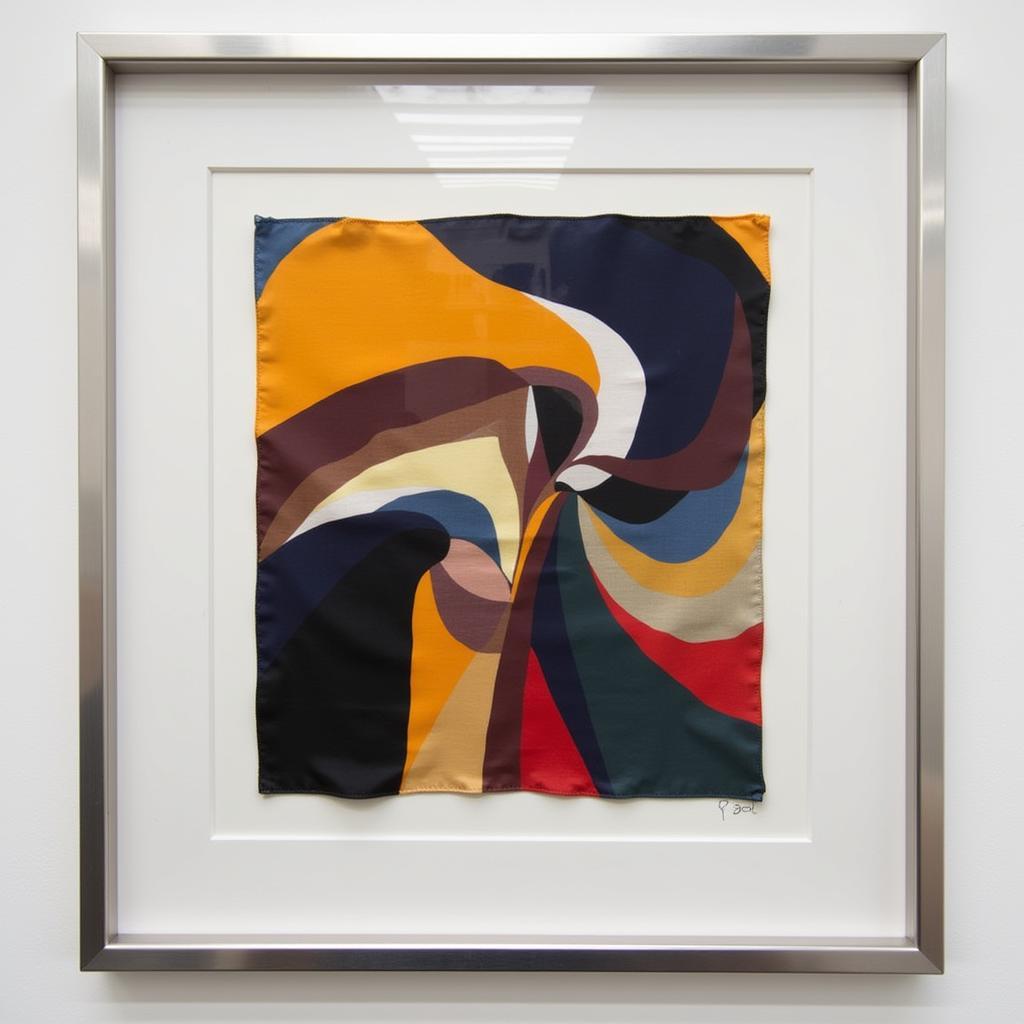Exploring the Magic of Iridescent Art Glass
Iridescent Art Glass, with its captivating play of light and color, has mesmerized artists and collectors for centuries. From the shimmering surfaces of ancient Roman glassware to the vibrant hues of contemporary art pieces, this unique medium continues to push the boundaries of artistic expression. This article delves into the fascinating world of iridescent art glass, exploring its history, techniques, and the enduring allure that makes it a true treasure. After reading this, you might even be inspired to try some art projects of your own, perhaps with a fun glitter art kit.
A Shimmering History: From Ancient Origins to Modern Marvels
The earliest examples of iridescent glass date back to the Roman Empire, where craftsmen discovered that adding metallic salts to molten glass created a stunning, rainbow-like effect. This technique, known as “luster,” was later refined by Islamic artisans during the Middle Ages, who produced exquisite iridescent ceramics and glassware. This shimmering effect was highly prized, often associated with luxury and mystique. These early examples paved the way for the later development of more sophisticated iridescent glass techniques in the 19th and 20th centuries. You can see the influence of early glassmaking in beautiful pieces like an art nouveau green glass vase.
 Ancient Roman Iridescent Glass Fragments
Ancient Roman Iridescent Glass Fragments
By the late 19th century, the Art Nouveau movement embraced the iridescent aesthetic, incorporating it into stunning jewelry, decorative objects, and architectural elements. Artists like Louis Comfort Tiffany further popularized iridescent glass with his iconic lamps and windows, showcasing the medium’s ability to capture and transform light. This period witnessed a surge in experimentation with different techniques for creating iridescence, leading to a wider range of colors and effects. Many stunning pieces, such as Art Nouveau rings for sale, still exemplify the beauty and craftsmanship of this era.
The Science of Shimmer: How Iridescence is Created
What exactly causes this mesmerizing play of color? Iridescence in glass results from the interference of light waves reflecting off multiple layers or thin films on the glass surface. These layers can be created through various techniques, including:
- Lustering: Applying metallic salts to the glass surface, which then react with heat to create a thin, iridescent film.
- Fuming: Exposing the hot glass to metallic vapors, which condense on the surface to form a reflective layer.
- Thin-film coating: Applying a thin layer of a different material, such as titanium dioxide, to the glass surface.
 Modern Iridescent Art Glass Sculpture
Modern Iridescent Art Glass Sculpture
Each technique produces a unique effect, ranging from a subtle sheen to a dramatic, multi-colored shimmer. The thickness and composition of the reflective layer determine the specific colors and patterns observed. Even pieces like fish art glass can benefit from the application of these techniques.
What are the Different Types of Iridescent Art Glass?
Iridescent art glass comes in a wide variety of forms, each with its unique characteristics and applications:
- Art Glass Sculptures: These three-dimensional pieces showcase the beauty and versatility of iridescent glass, often incorporating complex shapes and textures.
- Vases and Bowls: Iridescent glass adds a touch of elegance and sophistication to functional objects, transforming them into decorative art pieces.
- Jewelry: From pendants and earrings to bracelets and rings, iridescent glass adds a captivating sparkle to wearable art.
- Architectural Glass: Iridescent glass can be used to create stunning windows, skylights, and other architectural features, transforming spaces with vibrant light and color.
Caring for Your Iridescent Treasures
While durable, iridescent art glass requires proper care to maintain its beauty:
- Gentle Cleaning: Use a soft, lint-free cloth and mild soapy water to clean your iridescent glass.
- Avoid Abrasives: Harsh chemicals and abrasive cleaners can damage the delicate iridescent surface.
- Proper Storage: Store your iridescent glass pieces in a safe, dry place, away from direct sunlight and extreme temperatures.
Conclusion: Embracing the Beauty of Iridescent Art Glass
Iridescent art glass, with its captivating interplay of light and color, continues to inspire and enchant. From its ancient origins to its modern interpretations, this unique medium offers endless possibilities for artistic expression. Whether you are a seasoned collector or simply appreciate the beauty of art glass, the shimmering allure of iridescent glass is sure to captivate you. Consider adding a touch of iridescent magic to your life with a unique art deco Christmas tree.
FAQ
- What makes iridescent glass different from regular glass?
The iridescent effect is created by the interference of light reflecting off thin films or multiple layers on the glass surface. - Is iridescent glass expensive?
The price varies depending on the piece’s size, complexity, and the artist’s reputation. - Can iridescent glass be repaired if it gets chipped or broken?
Minor chips can sometimes be repaired, but significant damage is often irreversible. - Where can I buy iridescent art glass?
Art galleries, craft fairs, and online marketplaces are all good places to find iridescent art glass. - Is iridescent glass fragile?
While generally durable, it’s important to handle iridescent glass with care to avoid chipping or breakage. - How do I clean iridescent glass?
Use a soft cloth and mild soapy water, avoiding harsh chemicals and abrasives. - What are some popular uses for iridescent art glass?
Sculptures, vases, jewelry, and architectural elements are just a few examples.
 Iridescent Glass Jewelry Collection
Iridescent Glass Jewelry Collection
You might also be interested in articles about other types of art glass, such as information on where to find fish art glass.
If you need assistance, please contact us at Phone Number: 02462573573, Email: [email protected] or visit us at Savico Megamall, 7-9 Đ. Nguyễn Văn Linh, Gia Thụy, Long Biên, Hà Nội 10000, Việt Nam. We have a 24/7 customer service team.


